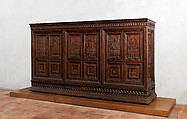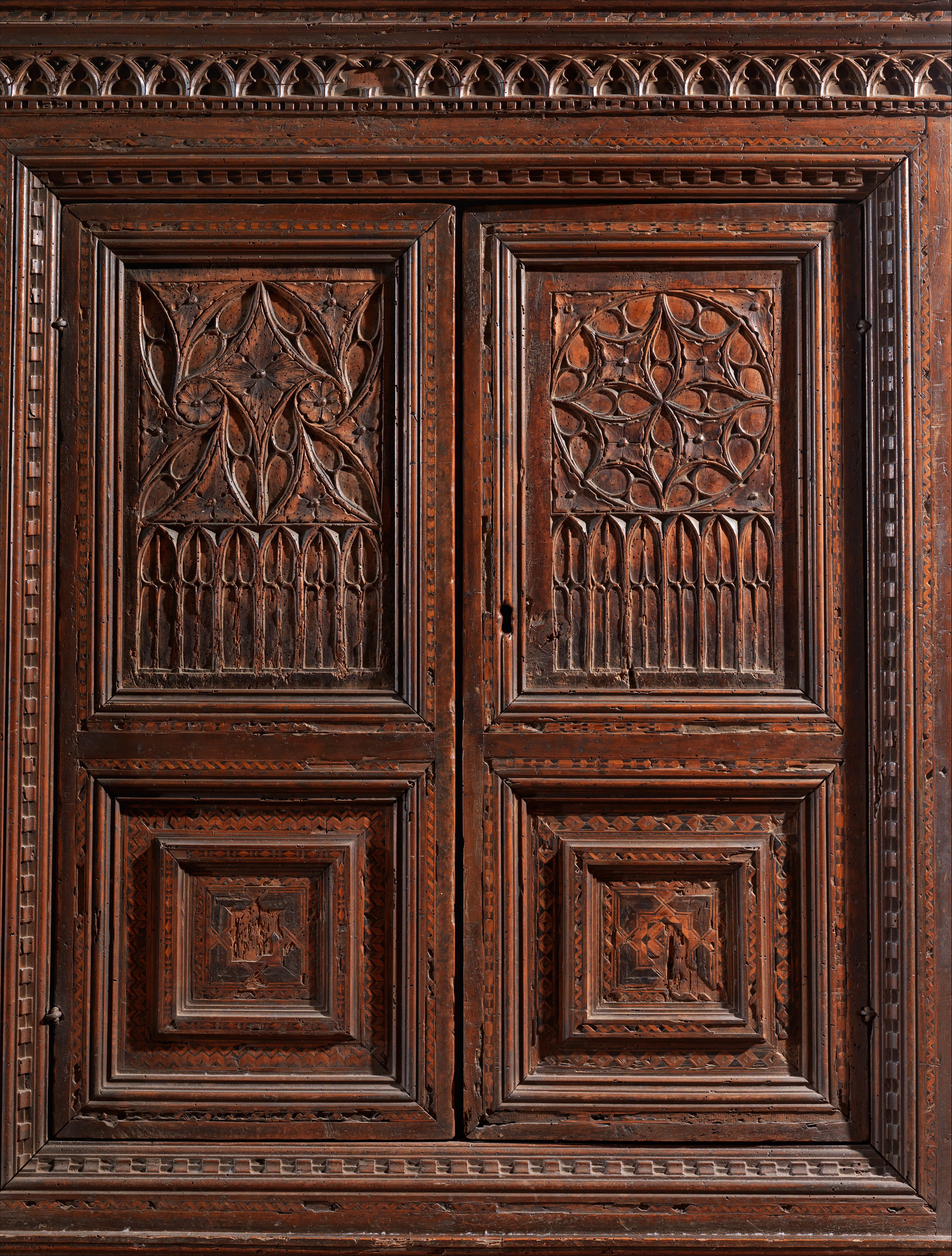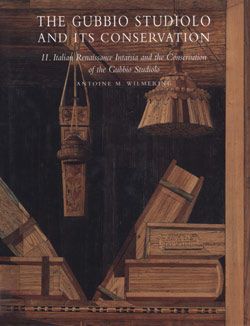Credenza
The credenza was originally a functioning sideboard intended for the preparation and serving of food, but it evolved in the late Middle Ages into a display for expensive plates and other vessels and was thus often draped in luxurious fabrics. Whereas most medieval furniture has suffered from use and climate over the centuries, this credenza is unusually well preserved. It has been attributed to the brother Lorenzo (1425–1477) and Cristoforo Canozi (ca. 1426–1491) from Lendinara, in northern Italy, and associated with their early style. The piece is decorated with a total of eight panels. The top two-thirds of each panel contains a circular form resembling a rose window, with a row of intricate lancets below; square fields, each covered with rectilinear patterns in intarsia, occupy the bottom thirds of the panels. The six panels that form the front face are divided into three pairs of doors, each opening into a two-shelf interior where dishes could be stored.
Due to rights restrictions, this image cannot be enlarged, viewed at full screen, or downloaded.
This artwork is meant to be viewed from right to left. Scroll left to view more.







